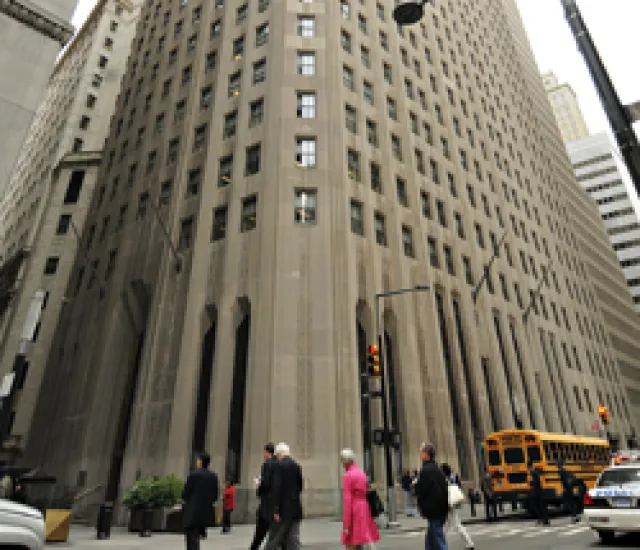The custody banking business, already among the most concentrated of financial services, may be headed toward even more consolidation.
The industry, dominated in the U.S. by a handful of giants such as State Street Corp. and Bank of New York Mellon Corp., is feeling numerous stress points. Low interest rates have cut into profits, and expenses are on the rise thanks to a slew of new regulations written in response to the financial crisis, the Lehman Brothers Holdings collapse and the Bernard Madoff scandal. More than ever, investors and policymakers want proof that funds are where they are supposed to be. That creates opportunities for custody banks, but it also increases compliance costs.
And then there’s the torrent of lawsuits filed by state attorneys general in California, Florida, North Carolina, Oklahoma and Virginia, who have joined with private companies in alleging that State Street, BNY Mellon and other banks overcharged pension funds and other customers for transactions in the foreign exchange markets. Those suits also could cut into earnings.
“Custody is a business that rewards scale. Expenses are rising as regulatory requirements become more complex,” Simon Gleeson, a London-based attorney with global law firm Clifford Chance, tells Institutional Investor in an interview. “The benefits of scale will become more pronounced, and there will be more consolidation.”
Some banks have exited the business altogether. Low margins have made custody less attractive for universal banks, especially midsize banks. “Ten years ago the prevailing view held that a bank had to offer custody in order to be a full-service bank,” Gleeson says. “Today many banks have determined that custody can be outsourced.”
BNY Mellon bought PNC Financial Services Group’s investment management business last month for $2.3 billion. M&T Bank Corp. purchased Wilmington Trust last year for about $351 million.
BNY Mellon CEO Robert Kelly said in an earnings statement recently that the purchase of “high-quality” assets helped his bank beat second-quarter earnings estimates in an environment of low interest rates and rising expenses.
Domestic opportunities for mergers and acquisitions by U.S. institutions are limited so U.S. banks are looking abroad. State Street bought the securities servicing unit of Italy’s Intesa Sanpaolo for $1.82 billion in May, and it bought Bank of Ireland’s investment management business earlier this year.
State Street reported that investment management fees during the second quarter were up 24 percent from the first quarter, to $250 million, thanks in part to the acquisition of Bank of Ireland assets. Overall, State Street led the industry during the second quarter, with total growth in fees of 16 percent.
“I would characterize the regulatory burden as severe, and there are costs associated with that,” says John (Jack) Klinck, executive vice president and global head of State Street’s corporate development and global relationship management group. Banks need to set aside additional capital, hire people to keep up with compliance, and make use of technology and other tools to boost efficiency.
Some banks, especially in Europe, are selling their custody operations, in part to raise cash to help them meet new capital standards required under Basel III rules, Klinck says.
“There is no doubt in my mind that institutions that don’t have scale in the custody business — or are under pressure to raise capital — will continue to sell their custody businesses, and that creates opportunity for State Street, which is well capitalized,” he says.
Some opportunities for acquisitions will be found in Europe. Klinck says emerging markets present good opportunities in terms of growth but that geopolitical risk and “severe” fiduciary requirements in some of those markets must be considered as part of an investment analysis.
Financial pressures may have hit smaller custody banks particularly hard and forced them to sell, according to Michele (Mitch) Gibbons, a partner with New York-based law firm Jones Day. She says some of the larger deals may have been driven by the strategic need to offer a wider range of services. But, she notes, “we do believe that we have seen some of the smaller custody banks suffer from the added costs and compliance obligations, and some consolidation has occurred because they cannot compete or survive. The consolidation trend may also be a result of such acquisition opportunities.”
Because most U.S. custody banks have at least $50 billion in assets, they are classified as systemically important institutions — and will be subject to increased capital requirements, says Barbara Mendelson, a partner with New York-based law firm Morrison & Foerster. “Custody banks will face increased prudential regulation as a result of Dodd-Frank requirements. There will be more scrutiny, and ‘living wills’ must be put in place,” she says. “We are seeing layers of additional regulation, and as a result, expenses are going up.”
“Expenses remained stubbornly high” across the custody banking sector, Nomura Securities International analyst Glenn Schorr wrote in a July 21 report on trust banks. During the second quarter, expenses for trust banks grew an average of about 5 percent from year-ago levels, said Schorr, who rates the group neutral.
In such an environment, the big are going to get bigger.
“The hurdles that you face to stay in this business are high,” says State Street’s Klinck. “It takes a lot of money.”






